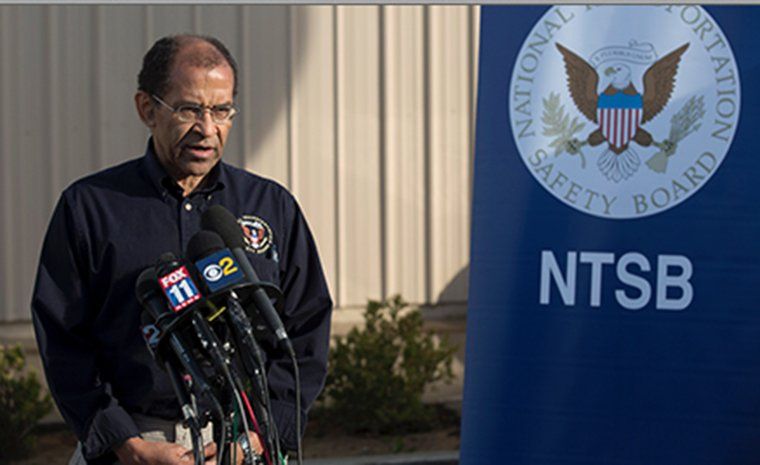
The Wall Street Journal is reporting (subscription only) that structural failure, rather than an engine explosion, is the initial focus of the NTSB investigation into the loss of Virgin Galactic’s SpaceShipTwo on Friday. It is quoting unnamed sources as saying the preliminary video and data analysis is turning the focus to an aerodynamic breakup, although because of the early nature of the probe the focus could change.
Because it was a test flight, NTSB investigators will have unusually complete flight and tracking data to determine the cause of Friday’s breakup and crash of Virgin Galactic’s SpaceShipTwo. The accident killed one pilot and left a second badly injured.
On Saturday, a 15-person team from the NTSB arrived to begin its probe into the accident, its first-ever spacecraft crash investigation. “We participated in the launches of the Challenger and the Columbia, but this will be the first time we have been in the lead of a space launch that involved persons on board,” said Christopher Hart, NTSB acting chairman. He arrived at Mojave Air and Space Port north of Los Angeles on Saturday.
One thing the investigators won’t have to do is sweep the desert for data recorders. “Because it was a test flight, it was heavily documented in ways that we don’t see with normal accidents. We know of six cameras on the vehicle itself, six non-volatile sources of information on the vehicle itself, three cameras on the mothership, the White Knight, telemetry with over 1000 parameters, there was a range camera at Edwards Air Force Base that we’ll be using,” Hart said. There was also a chase aircraft with cameras and radar. Hart said he didn’t know if all the cameras had been recovered.
Two pilots were aboard SpaceShipTwo during the accident. Michael Tyner Alsbury, 39, was killed in the accident while Peter Siebold, 43, was injured. He apparently parachuted or was ejected from the vehicle. A spokesperson for Scaled Composites said Saturday that Siebold was awake and alert, but investigators have not interviewed him.
As of Saturday, the agency had formed working groups to investigate engine, airframe, performance and data issues. During a short press conference, Hart confirmed what news footage and photos seemed to suggest: The vehicle broke up and created a debris field five miles long. “When the wreckage is dispersed like that, that indicates the likelihood of in-flight breakup,” Hart said. Footage and photos released by networks on Saturday seemed to reveal a flash or explosion on the vehicle shortly after it was released from the WhiteKnightTwo carrier ship. Hart said the debris field was oriented northeast to southwest, with the tail boom structure most northeastward and the engine farthest to the south.
Hart said the NTSB’s on-scene investigation would take about four to seven days and the full investigation should be complete in about a year. Meanwhile, for the time being, Virgin Galactic is free to continue its operations. “We are here to investigate this accident. While we are investigating, there’s nothing that stops this operator from continuing flying. If we find anything in the course of this investigation that warrants immediate attention, rather than waiting for the completion of our report, we would put out immediate recommendations as we have frequently done,” Hart said.
































